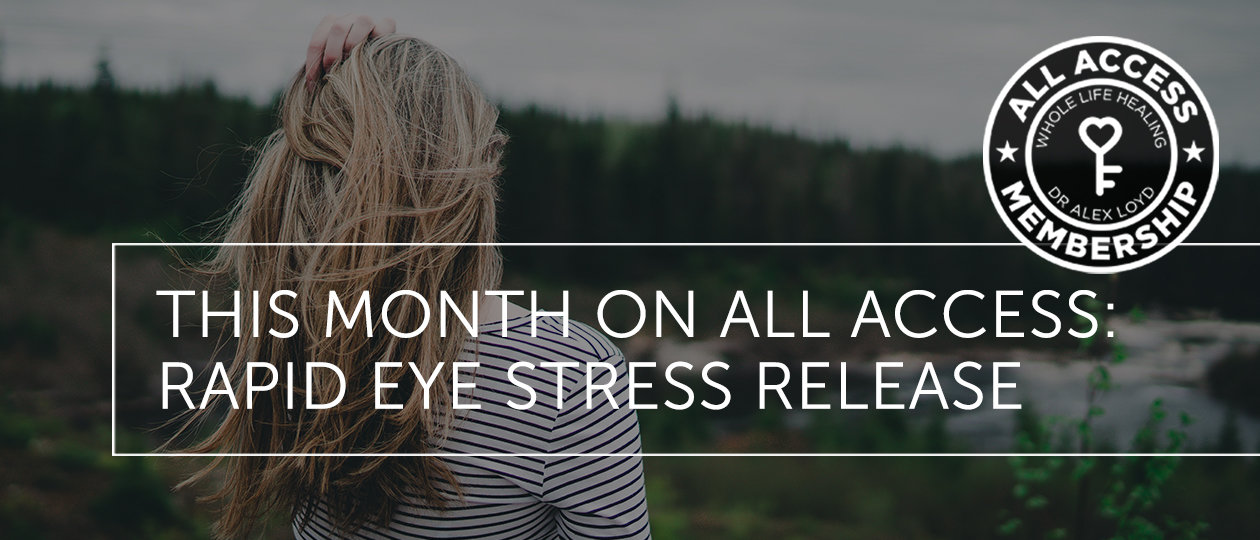This Month on All Access: Rapid Eye Stress Release
Have you ever stopped to notice the way that your eyes move involuntarily while you’re deep in thought about something? All the way back in 1987, a woman named Francine Shapiro, PhD, used this connection to the unconscious mind to create something called eye movement therapy, also known as EMDR. Since then, it has become one of the most popular and effective methods for dealing with anxiety, trauma, and stress. It has been the subject of over thirty studies, virtually all of which have found it to be effective, well beyond the capacity of a placebo. It has also been approved by the American Psychological Association and endorsed as “effective” by Scientific American, Web MD, and many others.
I was trained in eye movement therapy during my doctoral internship and saw firsthand the wonderful and often shocking benefits, but I also saw a couple of problems. Firstly, the patterns used in this type of therapy are meant to imitate those conducted by the unconscious mind, especially during REM sleep, but in eye movement therapy they are chosen arbitrarily by a therapist and done with the patient’s eyes open, meaning they’ll virtually never match the perfect pattern your unconscious would choose. Secondly, because it requires a therapist for each session, it tends to become very expensive. Finally, I’ve noticed that it becomes far more effective with a simple, 20 second technique to reduce stress done immediately beforehand, but this is not part of the method most people use.
About 12 years ago, I taught my own version of eye movement therapy at one of my workshops, with outstanding results. Almost every single one of the several hundred people at the workshop saw some kind of dramatic improvement, and in many cases, issues they had been struggling with for years simply vanished over the course of a few hours. Since then, I’ve used the method in one-on-one environments, but haven’t had the chance to share it with a wider audience—until now.
This coming April marks the first time that this method, which I call Rapid Eye Stress Release, will be publicly available. While eye movement therapy is a wonderful method, I am convinced that mine works even better for most people because it allows your body to create its own perfect pattern, rather than relying on a therapist to give you one at random. Not only does it more accurately reflect REM sleep, but you can do it at home (in your pajamas, if you like), without the expense of a therapist for each session.
As usual, I’m delivering in the form of a video guide that will teach you everything you need to know in simple steps, walking you through each part. If you want to improve mental, emotional, or relational problems in just minutes a day, this has got to be one of the easiest ways to do it.
Have a blessed, wonderful day!
Alex Loyd



